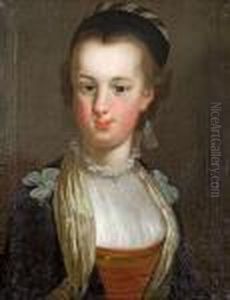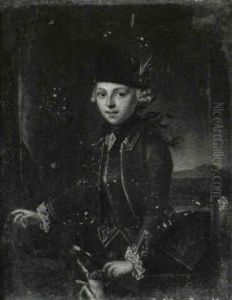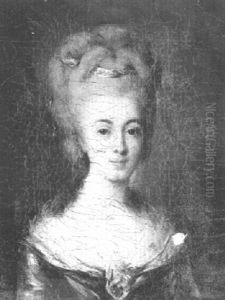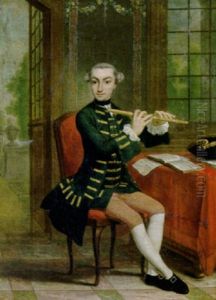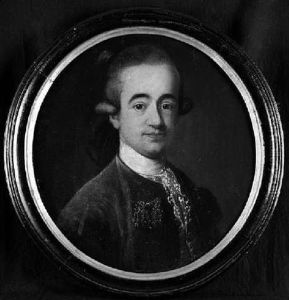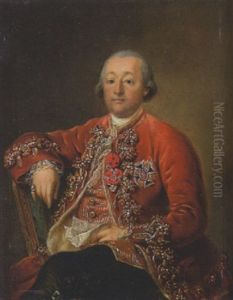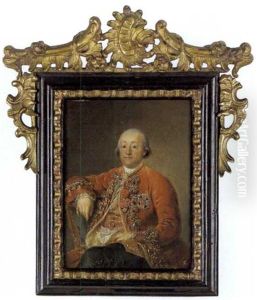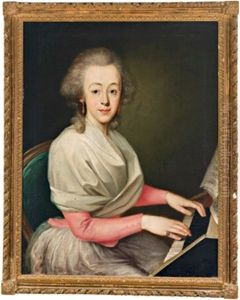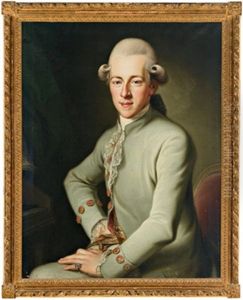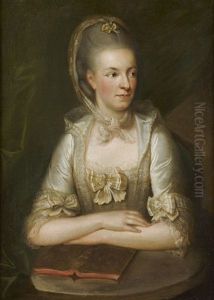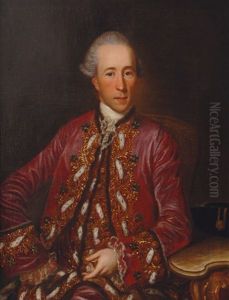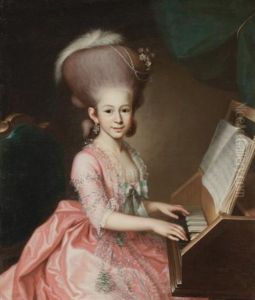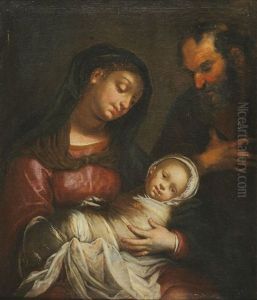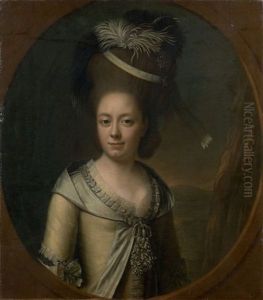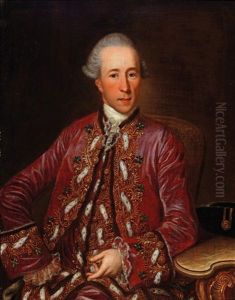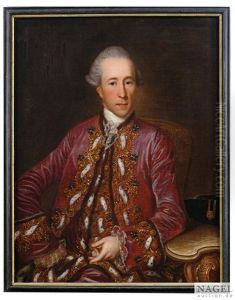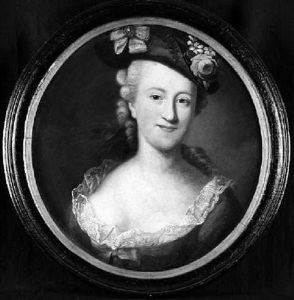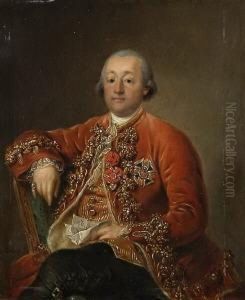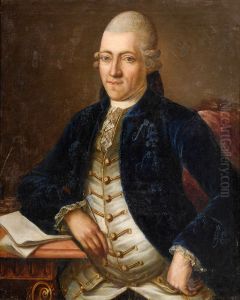Georg Anton Abraham Urlaub Paintings
Georg Anton Abraham Urlaub was a German painter and engraver who was born in 1713 in Würzburg, part of the Franconia region of Bavaria. He is primarily known for his work in the Rococo style, which was popular across Europe during the mid-18th century. Urlaub's work is characterized by its lightness, elegance, and decorative quality, typical of the Rococo aesthetic.
Urlaub received his early training from his father, who was also an artist. He later continued his artistic education under the guidance of prominent painters of the time. His career began to flourish in the 1730s and 1740s when he started receiving commissions from important patrons, including members of the church and nobility. As his reputation grew, he became known for his religious compositions, portraits, and genre scenes.
Despite his successful career, not much is known about Urlaub's personal life. His works, however, have been preserved and studied, offering insights into the cultural and artistic atmosphere of 18th-century Germany. Urlaub's paintings can be found in several churches in Franconia, as well as in museums and private collections. He is also noted for his engravings, which helped to disseminate his and his contemporaries' Rococo style.
Georg Anton Abraham Urlaub's career was relatively short-lived; he died in 1759 at the age of 46. Nevertheless, his contribution to the Rococo movement in Germany has been recognized by art historians. Urlaub's work is an example of the transition from Baroque to Rococo and reflects the changing tastes and philosophies of his era. Today, he is remembered as a talented artist who embodied the spirit of his time and left a lasting impact on the art history of Germany.
